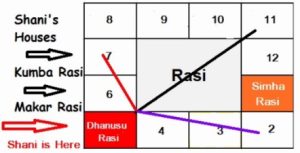Astrology Guide for Beginners
The study of astrology focuses on the interactions between planets and Earth. Even though the Sun and the Moon are luminaries, astrologers refer to them as planets for simplicity’s sake, but the term “planets” here also includes them. It means in our Solar family all the planets come under the ambit of astrology plus Sun and Moon are also taken as two planets in Astrology.
Two Important Factors
Also to note that after millennia of study, two important findings have been identified:
Every planet represents a different component of life or an energetic aspect of ourselves (such as emotions, communication, love).
How these aspects appear in the sky is indicated by the planetary locations. Based on your birth chart’s planet positions, natal astrology outlines the ways in which each aspect of your life plays out. The 12 zodiac signs are the names given to the twelve different styles or archetypes that ancient Babylonian astronomers used to divide the sky. These indicators show the many ways in which these planetary components exhibit.
If you genuinely want to learn Astrology and want to predict your FUTURE as well as others click on the link https://vedicastro.in/
Four Pillars of Astrology
Four things are to be taken into consideration. These are
- The Planets
- Zodiac signs and the placement of the planets therein.
- The houses
- Aspects
Movement of Sun and Moon
The planets, sun, and moon appear to circle around us from Earth’s perspective in a course that approaches the ecliptic. (This geocentric viewpoint is useful in astrology since it examines how the Earth and the larger universe interact.) These celestial bodies travel through the zodiac’s 12 signs as they revolve. Many people know that the sun is in Aries from late March to most of April, then in Taurus, then in Gemini, and so on. The sun travels through each sign of the zodiac for approximately one month, making a full rotation in a year. In fact, this astronomical voyage is where our notion of a “year” originates. In contrast, the moon travels through the zodiac in just one month, which is how the word “month,” which comes from “moon,” came to be. The sun and moon cycles across the zodiac gave rise to the whole concept of time that we know today. Our basic concepts of time were established by the exceptionally perceptive observations of the early astrologers.
Signs of Astrology
We can depict the apparent trajectory along the ecliptic in two dimensions because it is essentially flat and has a maximum deviation of about eight degrees. Usually, the representation is a circle. The zodiac signs are split into 12 sections on this circle. The actual placements of the planets in space correspond to one of these 12 signs; also, each planet is located within one of the 12 Houses; this will be covered in more detail later.
Aspects and its Importance in Astrology
Aspects are the precise angles or separations between planets or between a planet and a point, as defined by astrologers. They set the planets in a 360-degree circle created by dividing the celestial sphere. A planet is said to have a significant aspect when it is located 0, 60, 90, 120, or 180 degrees apart.
Other planet separations are included in minor aspects (see particular information on aspects for further details). Astrologers carefully examine the dynamic relationships formed by planets in such configurations. These factors mostly determine whether the energy of a planet will appear in your life easily or not, favourably or unfavourably. In the past, some characteristics were seen as undesirable and others as positive. But contemporary astrologers have changed, claiming that everything has positive potential.
Aspects are the central idea in astrology. They bring the planetary players and the heavenly stage to life. When there are no aspects, the cosmic story is silent and unchanging. The planets are roused by aspects, which cause them to display their energy fully.
If you genuinely want to learn Astrology and want to predict your FUTURE as well as others click on the link https://vedicastro.in/
History of Astrological Charts
Astrologers strive for order and clarity when creating charts, which include all of the previously covered topics. Known as a horoscope, an astrological chart is a celestial map for a specific period of time. These charts were originally made for special occasions like battles, coronations, or festivals rather than for people’s actual birth times. The only people who had birth records made were royals and dignitaries. Anybody can now view their birth chart, sometimes referred to as a natal chart or horoscope. Although your actual horoscope is still your birth chart, the phrase has become somewhat meaningless and is now commonly reduced to “a generic daily prediction based solely on your sun-sign.”
Requirements for Individual Chart
The birth date, time, and place must all be precise in your natal chart. Your birth chart is one of the most important resources that astrologers have at their disposal for deciphering and examining your cosmic blueprint.
Generally, astrologers emphasize glyphs which refer to symbol. It overpowers the utilities of words on charts. The depicted information on the chart enables a reader to perceive the chart in a better way. In my next discussion, I shall try to let you know the basic three factors of Astrology and their uses.

Good knowledge